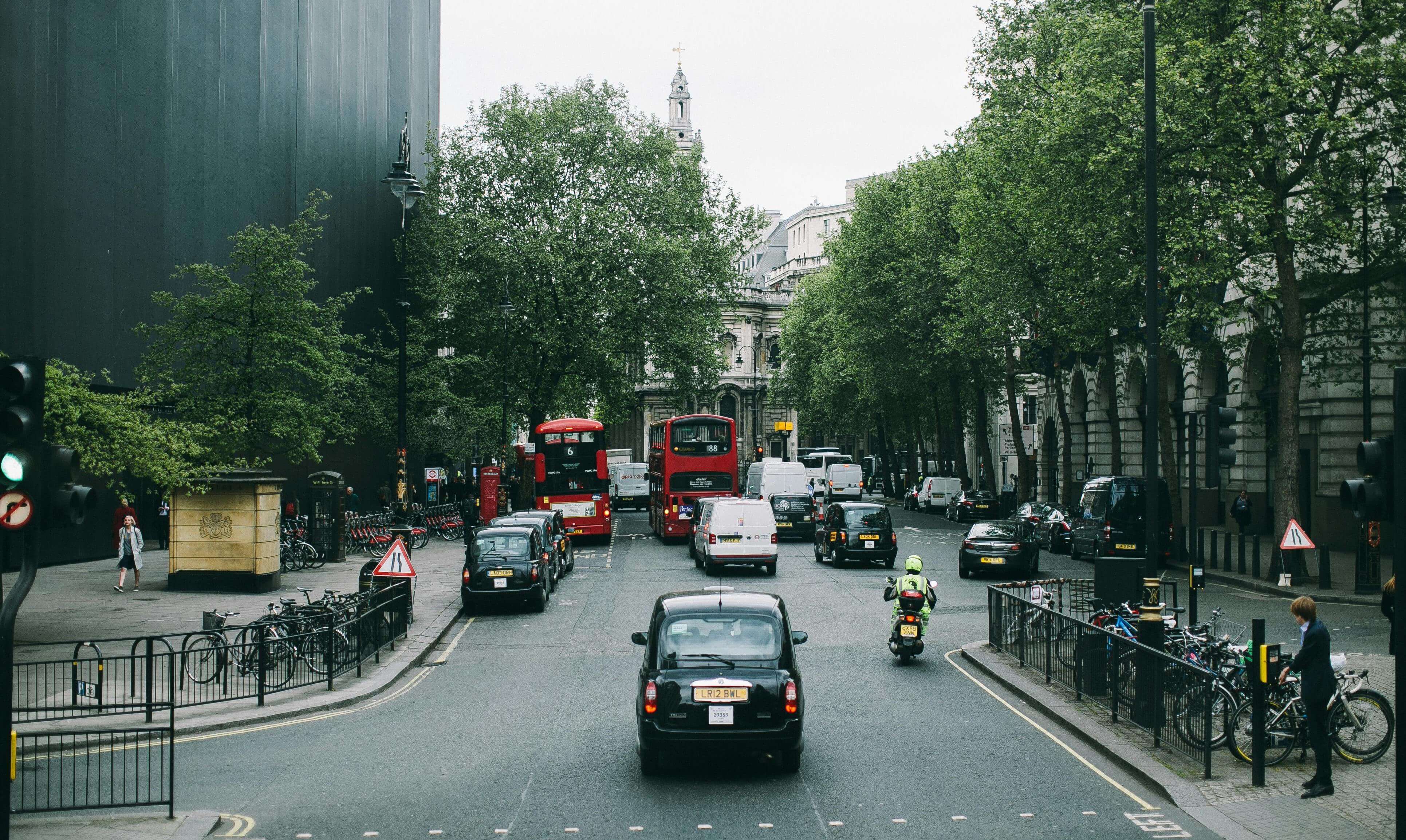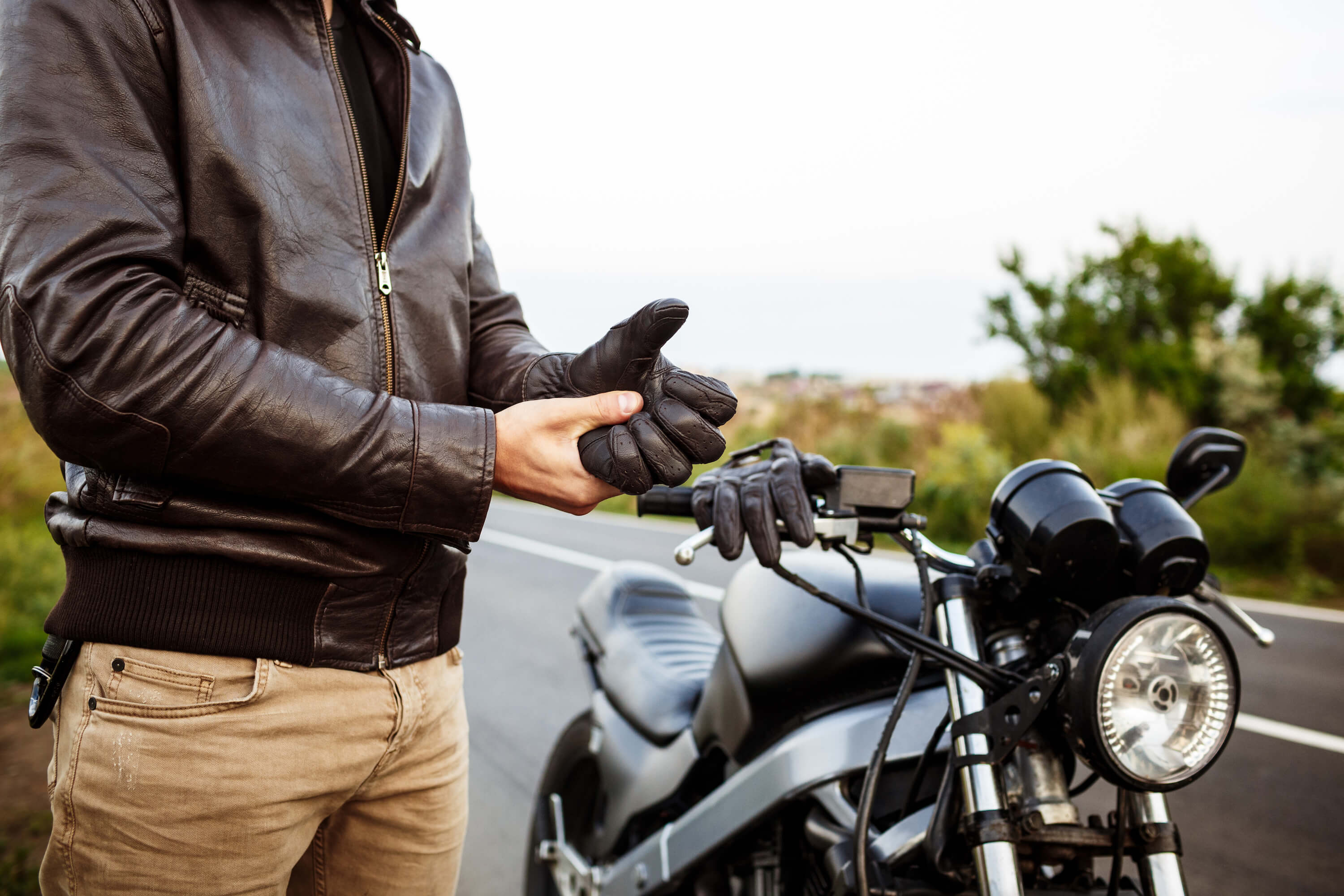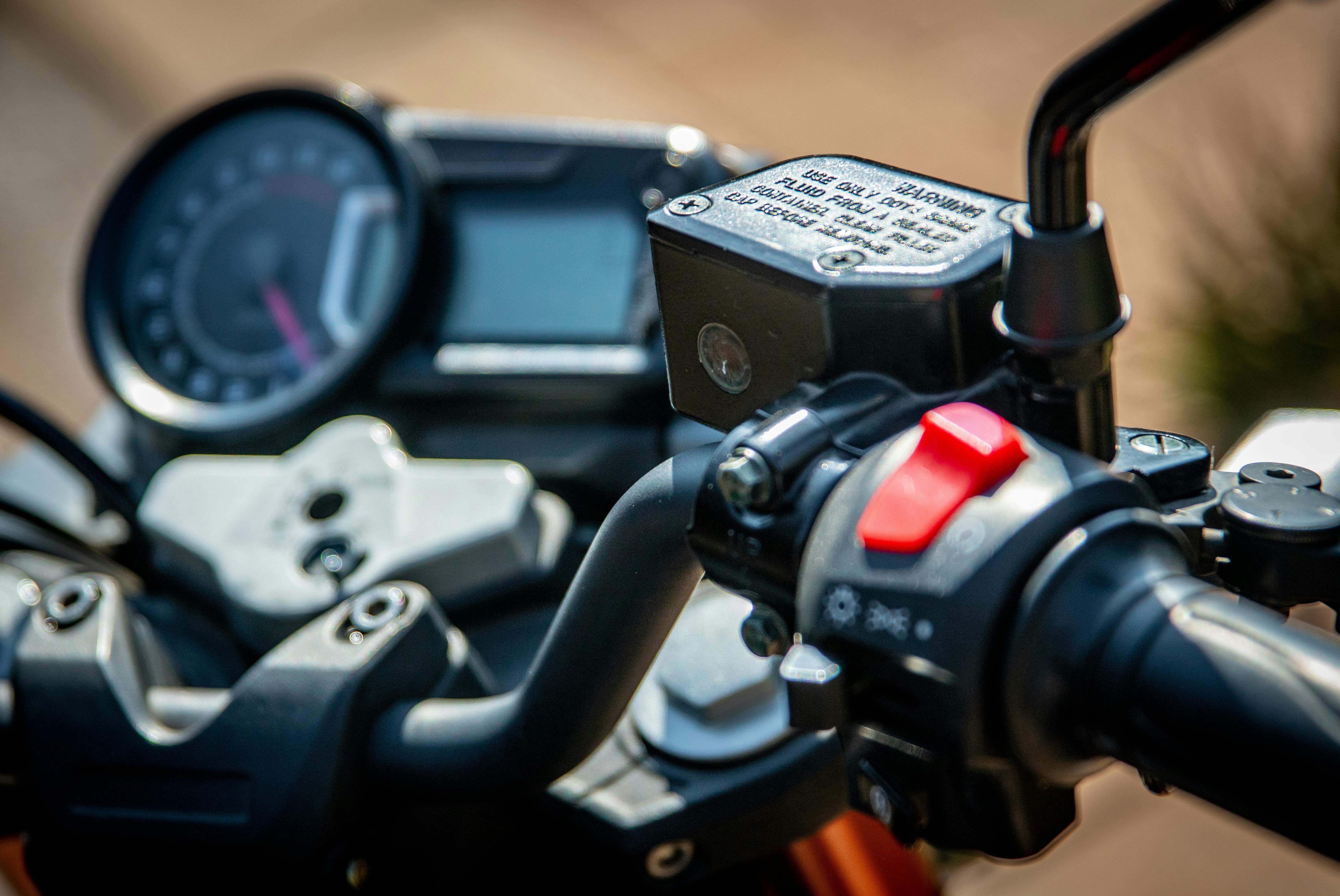back to the blog
Motorcycle Stopping Distances: What Every Rider Needs to Know

Olivia C · January 29, 2025
What is Stopping Distance and Why Does it Matter for Motorcyclists?
Stopping distance is the total distance a motorcycle travels before coming to a complete stop after the rider perceives a hazard. It’s made up of thinking distance and braking distance, both of which can be affected by speed, road conditions, and rider awareness.
This isn’t just a number—it’s a critical safety factor that can mean the difference between avoiding an accident or collision. Understanding how stopping distance will help you make smarter decisions, react faster, and stay in control.
Want to improve your chances of avoiding mistakes on the road? Read the full blog below.
Breaking Down the Components of Motorcycle Stopping Distance
Stopping distance is made up of two parts:
1. Thinking Distance
This is the distance a motorcycle covers while the rider processes the need to stop and reacts by applying the brakes. This can be further broken down by perception time and reaction time i.e. how long it takes to perceive the need to stop, and how long it takes to react to this. Both can be affected by fatigue, alcohol, or distractions.
2. Braking Distance
This is the distance the motorcycle travels after the brakes are applied until it comes to a complete stop. Factors affecting braking distance include speed, road surface, tyre condition, and brake efficiency.
What Is the Stopping Distance of a Motorcycle Compared to a Car?
Motorcycles generally have shorter stopping distances than cars due to their lighter weight, but with a huge caveat: they’re a lot more sensitive to environmental factors. At higher speeds or in poor conditions, motorbikes actually need more space to stop safely since they’re less stable under hard braking compared to cars.

How Speed and Weather Conditions Impact Motorcycle Stopping Distance
The formula for stopping distance can be an important calculation you may want to keep in the back of your mind when riding.
Use the below as a general formula for stopping distance:
Stopping Distance = Thinking Distance + Braking Distance
Thinking distance increases proportionally with speed - double your speed, and your thinking distance doubles too. Braking distance, however, increases much faster - if you double your speed, your braking distance quadruples. This is due to the physics of motion - at higher speeds, your bike carries more energy, needing significantly more distance to stop.
For example:
- At 20 mph, stopping distance = 12 m (6 m thinking + 6 m braking)
- At 40 mph, stopping distance = 36 m (12 m thinking + 24 m braking)
As you can see, when speed doubles from 20 mph to 40 mph, thinking distance doubles (6m → 12m), but braking distance quadruples (6m → 24m).
The weather and road conditions also have a huge impact on stopping distances, so make sure to keep the below points in mind when riding:
- Rain or Wet Roads: Water reduces tyre grip, potentially doubling stopping distances.
- Hot Tyres on Dry Roads: Heat can improve grip but may lead to tyre wear if excessive.
- Icy or Snowy Roads: Extremely low traction increases stopping distances significantly, making sudden braking highly dangerous.
For more tips on handling poor conditions, check out this guide on riding in bad weather.
Tips to Improve Your Reaction Time and Braking Efficiency
The more motorcycle training you get (whether an Introduction to Motorcycling, CBT or full licence training), the better you will be at riding and maintaining your bike, both of which will help with safe braking. With more experience on the road you’ll have a better understanding of hazards and defensive riding, both of which are key when getting a full A Licence.
For riders at any stage of their riding experience, the below tips are invaluable:
- Never ride under the influence – Alcohol and drugs slow reaction time and impair judgment.
- Ride when fully alert – Fatigue, illness, and dehydration can affect focus and reaction speed.
- Keep your bike in top shape – Well-maintained brakes and tyres give you the best stopping power.
- Travel light when possible – Reducing excess weight improves braking and handling.
- Ride defensively – Stay aware, anticipate hazards, and keep a safe following distance.

UK Laws and Guidance on Safe Stopping Distances for Motorcyclists
The Highway Code section 126 gives guidance on safe stopping distances for motorists:
“Drive at a speed that will allow you to stop well within the distance you can see to be clear. You should
- Leave enough space between you and the vehicle in front so that you can pull up safely if it suddenly slows down or stops. The safe rule is never to get closer than the overall stopping distance.
- Allow at least a two-second gap between you and the vehicle in front on roads carrying faster-moving traffic and in tunnels where visibility is reduced. The gap should be at least doubled on wet roads and increased still further on icy roads.
- Remember, large vehicles and motorcycles need a greater distance to stop. If driving a large vehicle in a tunnel, you should allow a four-second gap between you and the vehicle in front.
If you have to stop in a tunnel, leave at least a 5-metre gap between you and the vehicle in front.”
See “Using the front and rear brakes” for braking tips depending on weather conditions. Remember to remember these rules to help avoid any mishaps you may encounter when riding.

Overall
By understanding the factors influencing stopping distance and following safe riding practices, you can significantly reduce the risk of accidents and ride more confidently.
If you're just starting your riding journey, RideTo's CBT training is the perfect way to gain the essential skills and knowledge for safe riding. Our courses ensure you're equipped with the basics to handle your motorcycle with confidence on the road.
For those looking to progress further, our Full Motorcycle Licence training offers a structured path to mastering more advanced riding techniques. Whether you’re working towards an A1, A2 or the full, unrestricted A licence, our courses equip you with the skills to handle a range of situations on the road safely and confidently.
Need help understanding your next step? Get in contact with us and we’ll get you on the road in no time.
FAQs
What Is the Stopping Distance Rule in the UK?
The stopping distance rule in the UK generally refers to the “two-second rule”, a rule of thumb suggesting you should leave at least two seconds of space between you and the vehicle in front. You can test this out by choosing a fixed point up ahead, for example a road sign, then start counting one the vehicle in front has passed, finishing the count when you pass it.
How Do You Remember the Stopping Distances on a Motorcycle?
To remember motorcycle stopping distances, follow the 2-second rule: keep at least a 2-second gap from the vehicle ahead, doubling it in wet or slippery conditions. For dry roads, think in multiples of three, as stopping distances in metres roughly follow: 12m at 20 mph, 23m at 30 mph, and 36m at 40 mph.
What Is the Average Braking Distance for a Motorcycle?
The average braking distance for a motorcycle depends on speed and road conditions. On a dry road, it’s around 6 metres at 20 mph, 14 metres at 30 mph, and 24 metres at 40 mph. In wet or slippery conditions, those distances can get a lot longer, so always leave extra space to stay safe.


